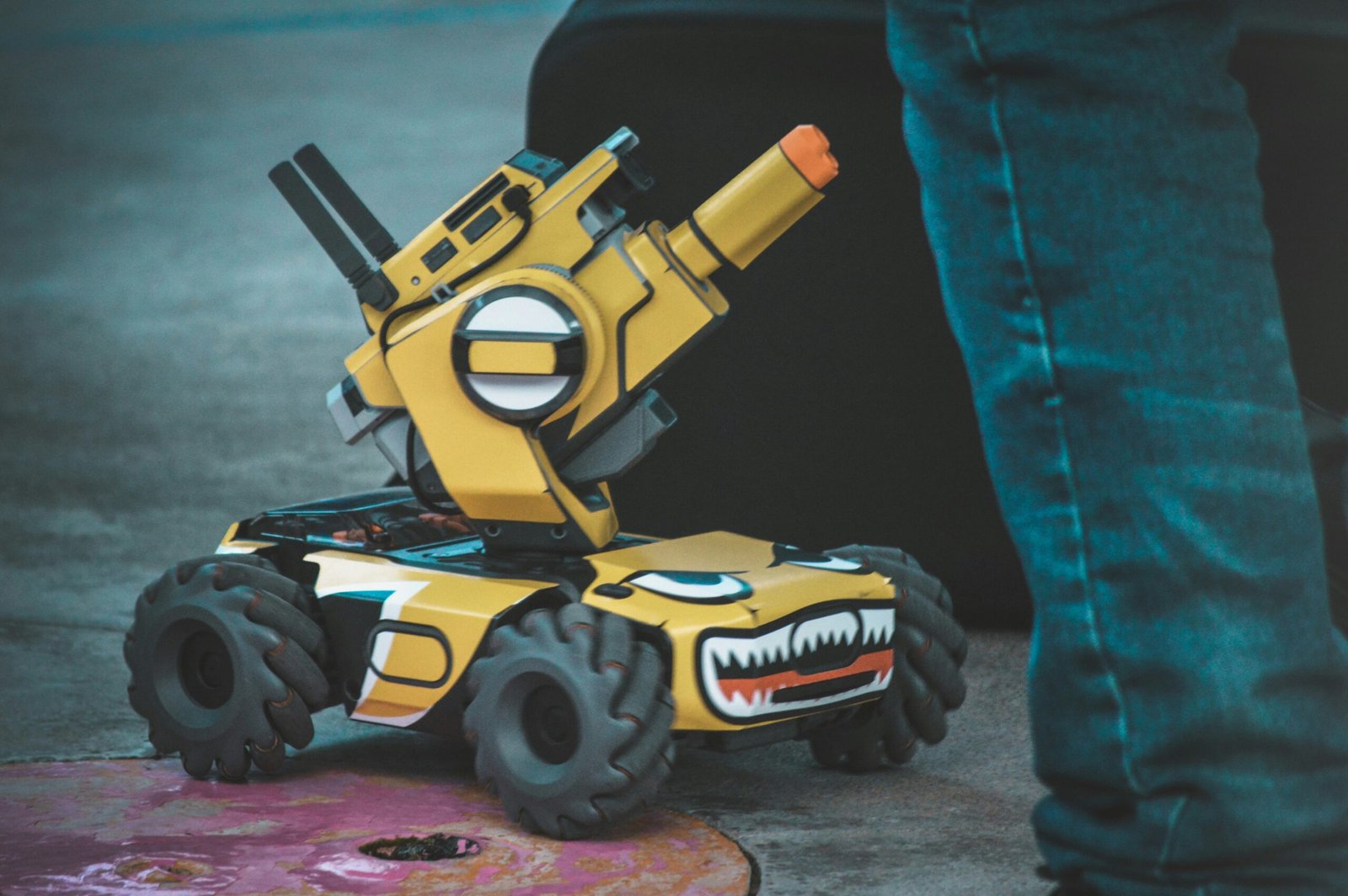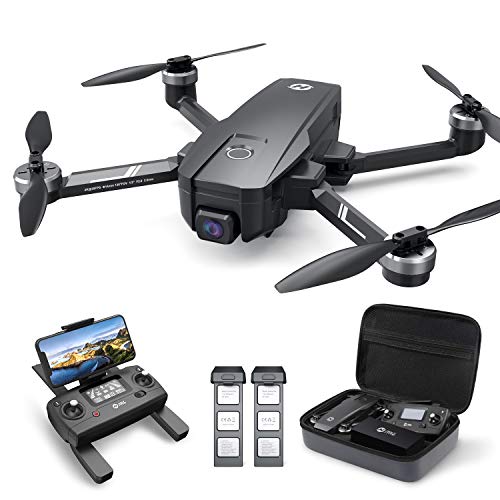
What are Autonomous Flight Capabilities?
Autonomous flight capabilities refer to the ability of drones to navigate and perform tasks without direct human intervention. This advancement is largely made possible by the deployment of artificial intelligence (AI) technology, which allows these unmanned aerial vehicles (UAVs) to process vast amounts of data in real-time. By utilizing AI algorithms, drones can interpret information from various sensors, enabling them to understand their environment, make decisions, and execute operations effectively.
At the core of autonomous flight is the integration of multiple sensors, including GPS, cameras, and LiDAR. These sensors collect data about the drone’s surroundings, which AI algorithms analyze to create a detailed map of the environment. Machine learning plays a crucial role in enhancing autonomous capabilities by enabling drones to learn from previous experiences. This continuous learning process allows UAVs to improve their navigational skills, adapt to changing conditions, and execute complex tasks with increasing proficiency.
The significance of autonomous flight extends across numerous industries. In agriculture, for instance, drones equipped with autonomous capabilities can monitor crop health, assess soil conditions, and optimize resource usage without requiring on-site human supervision. In logistics, autonomous drones can efficiently deliver packages by selecting optimal flight paths and adapting to air traffic, significantly reducing delivery times and costs. Additionally, in disaster response scenarios, UAVs can be deployed for search and rescue operations, providing real-time data to emergency services in areas that may be inaccessible to ground teams.
The advancements in autonomous flight capabilities are redefining the landscape of various sectors. The ability to operate without constant human oversight enhances efficiency, reduces operational costs, and ensures that critical tasks can be completed promptly and safely. As AI continues to evolve, the potential applications of autonomous drones are vast and varied, promising a future where UAVs play an integral role in both everyday operations and specialized tasks.
The Technology Behind Autonomous Flight
The advancement of autonomous flight in drones is rooted in several key technologies that work in harmony to enable these machines to navigate efficiently and safely. At the hardware level, GPS systems are fundamental, providing precise location data that helps drones determine their position in real-time. Coupled with accelerometers, which measure changes in velocity and orientation, drones can maintain stable flight patterns and adapt to external conditions. Additionally, high-resolution cameras are integrated for obstacle detection and navigation, empowering drones to understand their surroundings visually.
In conjunction with the hardware components, sophisticated software technologies are essential for coordinating the movements and actions of autonomous drones. Pathfinding algorithms play a pivotal role in determining the most efficient route for the drone to take, optimizing for factors such as distance, battery consumption, and environmental obstacles. These algorithms analyze the spatial data collected by the GPS and accelerometers to make informed decisions about the drone’s trajectory.
Moreover, computer vision has emerged as a crucial element in enabling drones to interpret visual data from their cameras. This technology allows drones to recognize patterns, classify objects, and detect changes in their environment, facilitating advanced navigation capabilities. Combined with real-time data processing, drones can react promptly to dynamic situations, such as avoiding obstacles or adapting to changing weather conditions.
Thus, the synergy between hardware and software technologies forms the backbone of autonomous flight, allowing drones to perform their tasks with minimal human intervention. As these technologies continue to evolve, the capabilities of autonomous drones will expand, unlocking new applications across various industries. The integrated systems that power these drones not only enhance their operational efficiency but also significantly improve safety and reliability in autonomous operations.
Applications of Autonomous Drones
Autonomous drones are rapidly transforming various industries by offering innovative solutions that enhance efficiency and effectiveness. One of the most prominent sectors benefiting from this technology is agriculture. Farmers are increasingly utilizing autonomous drones for crop monitoring and spraying. These drones equipped with advanced sensors and imaging technologies provide real-time data on crop health, enabling precise irrigation and fertilization. This targeted approach not only minimizes waste but also maximizes yield, a significant improvement over traditional methods that often rely on manual assessments.
In the logistics sector, autonomous drones are revolutionizing delivery systems. Companies are experimenting with drone technology to transport goods directly to consumers’ doorsteps, significantly reducing delivery times. The ability to navigate autonomously allows drones to bypass traffic and adverse road conditions, ensuring a reliable and efficient service. Such innovations are particularly advantageous in urban areas where congestion can delay traditional delivery vehicles.
Another critical application of autonomous drones lies in search and rescue operations. These drones can cover vast areas quickly and efficiently, providing real-time aerial views to assist rescue teams in locating missing persons or assessing disaster-struck regions. Equipped with thermal imaging, they can even identify heat signatures in challenging environments, enhancing the probability of successful rescues. This capability is essential when every minute counts, showcasing a stark contrast to conventional methods that may be hampered by terrain or hazardous conditions.
Lastly, environmental monitoring is another area where autonomous drones are making a notable impact. These drones can monitor wildlife populations, assess pollution levels, and conduct surveillance of natural disasters. By collecting and analyzing data from hard-to-reach locations, they contribute critical insights that support conservation efforts, enabling faster responses to ecological threats compared to traditional monitoring techniques.
Challenges of Autonomous Drones
The integration of autonomous drones into various sectors faces substantial challenges that must be addressed for their full potential to be realized. One of the primary technological limitations is the reliability of navigation systems, especially in complex and dynamic environments. While advancements in sensors and algorithms have improved autonomous flight, issues such as GPS signal loss or interference can severely hinder a drone’s performance. Additionally, the need for robust communication systems that can handle real-time data exchange is critical, particularly for collaborative missions or when operating in congested airspace.
Regulatory hurdles also pose significant challenges to the deployment of autonomous drones. Governments across the globe are still in the process of developing comprehensive frameworks that can govern the use of drones. These regulations often include restrictions on altitude, no-fly zones, and requirements for remote identification to ensure safety and privacy. The lack of universally accepted standards complicates the integration of autonomous drones into everyday operations, elevating the risks associated with their deployment.
Beyond regulatory and technological issues, safety concerns remain paramount. Autonomous drones must be equipped with fail-safe mechanisms to mitigate risks related to system failures, such as loss of control, collision with other aircraft, or unintended landings. Furthermore, the ethical implications of deploying drones in sensitive environments, such as in surveillance or disaster response, raise questions regarding public acceptance. Surveillance drones, in particular, have sparked debates surrounding privacy, leading to calls for clearer policies to govern their use and ensure public trust.
As the technology advances, addressing these challenges will require collaboration among stakeholders, including engineers, regulatory bodies, and the public. Cultivating a thoughtful approach to these issues is essential for creating a viable future for autonomous drones.
Regulations and Standards for Autonomous Drones
The rapidly evolving landscape of autonomous drones has necessitated the establishment of regulatory frameworks to ensure safe operation and integration into national airspace systems. Various governmental bodies are actively involved in formulating and enforcing these regulations. In the United States, the Federal Aviation Administration (FAA) serves as the primary regulatory authority for all drone operations. The FAA has developed specific guidelines for unmanned aircraft systems (UAS), particularly focusing on safety standards that govern the airworthiness and operational capabilities of autonomous drones.
Internationally, regulations vary significantly from one country to another. For example, the European Union has implemented the European Union Aviation Safety Agency (EASA) regulations, which provide a comprehensive framework for drone operations across member states. These regulations emphasize the importance of addressing safety, privacy, and security concerns associated with flying autonomous drones. Additionally, the International Civil Aviation Organization (ICAO) works towards developing a global regulatory framework that encourages harmonization among member states, recognizing that the technological capabilities of drones transcend national borders.
Several countries are taking innovative approaches to drone legislation. Nations such as Japan and Australia are incorporating specific testing and certification processes for autonomous drones, focusing on aspects like operational reliability and risk assessment. The implementation of remote identification systems is also becoming a requirement in various jurisdictions, allowing for real-time tracking of drone movements, which enhances accountability and safety. Furthermore, as drone technology continues to advance, regulatory bodies are faced with the challenge of adapting existing laws to accommodate emerging capabilities while balancing innovation with public safety concerns.
AI Drones and Data Collection
Autonomous drones, equipped with advanced artificial intelligence capabilities, have revolutionized the way data collection is conducted across various sectors. These unmanned aerial vehicles (UAVs) can gather a wide array of data, including aerial photographs, survey information, and environmental metrics. The integration of AI allows these drones to operate with increased efficiency, autonomy, and precision, making them invaluable tools in fields such as agriculture, environmental monitoring, construction, and emergency response.
One of the primary types of data collected by drones is aerial photography, which provides high-resolution images useful for topographical surveys, urban planning, and agricultural assessment. With AI, these photographs can be processed in real-time to identify changes in the landscape, assess crop health, and even monitor wildlife populations. The ability to capture and analyze images swiftly enhances decision-making processes by providing stakeholders with timely and actionable insights.
In addition to visual data, autonomous drones can gather survey data that includes geographical information system (GIS) data, which is critical for mapping and spatial analysis. These drones can perform tasks such as land surveying with remarkable accuracy, offering a cost-effective alternative to traditional surveying methods. The implications of this data extend beyond simple measurements; it aids in infrastructure development, disaster management, and resource allocation.
Environmental monitoring is another crucial application of drone data collection. Equipped with sensors, these drones can collect real-time data on air quality, temperature, and other environmental parameters. This capability is essential for scientists and policymakers aiming to address environmental concerns and implement effective strategies for sustainable development.
In conclusion, the evolution of AI drones facilitates not only efficient data collection but also drives informed decision-making across various sectors. Their ability to gather comprehensive datasets significantly enhances our understanding of complex systems, ultimately contributing to improved strategies for managing resources and responding to challenges in the environment and beyond.
Future Trends in Autonomous Flight for Drones
The future of autonomous flight technology in drones promises significant advancements propelled by innovations in artificial intelligence (AI) and related fields. These developments are poised to redefine the applications and operational capabilities of drones across various sectors, from logistics to agriculture and emergency services. As AI algorithms continue to evolve, drones will gain enhanced decision-making abilities, allowing them to navigate complex environments with minimal human intervention. This increased autonomy will enable more intricate flight paths and mission profiles, ultimately improving efficiency and reducing risks associated with human error.
Moreover, the design of drones is likely to undergo substantial changes to accommodate emerging technologies. The integration of small, lightweight materials, coupled with advanced propulsion systems, aims to enhance both performance and endurance. New designs may incorporate vertical take-off and landing (VTOL) capabilities, allowing drones to operate in diverse environments and adapt to various operational requirements. As a result, industries can expect drones to be more versatile, capable of handling a wider range of tasks—from parcel delivery in urban settings to surveillance operations in remote areas.
Furthermore, the advent of 5G networks and edge computing will significantly bolster the operational capabilities of autonomous drones. The enhanced communication speed and reduced latency enabled by 5G will facilitate real-time data transmission, making it possible for drones to share information with one another and their control centers instantaneously. This interconnectivity allows for coordinated swarm operations, where multiple drones work collaboratively to complete a shared task efficiently. Additionally, edge computing will allow drones to process data locally, improving response times and fostering more sophisticated AI applications, such as real-time obstacle detection and avoidance.
Overall, these trends suggest that the future of autonomous flight for drones will be characterized by increased efficiency, enhanced safety, and broader applicability across numerous sectors, driven by technological advancements and innovative design approaches.
Case Studies: Successful Implementation of Autonomous Drones
As the adoption of autonomous drones continues to grow, several real-world case studies exemplify their effective deployment across various sectors. These instances highlight the problems faced and the solutions offered by autonomous flight technology, demonstrating the transformative capabilities of these advanced aerial systems.
One notable case study occurred in agriculture, where farmers in precision farming utilized autonomous drones for crop monitoring and health assessment. Farmers faced challenges such as labor shortages and the need for efficient resource management. By employing drones equipped with multispectral cameras, they were able to gather real-time data on crop conditions, accurately assessing irrigation needs and identifying pest infestations. The outcome was a significant reduction in water usage and pesticide application, enhancing both yield and environmental sustainability.
In the realm of disaster management, another successful implementation was observed during wildfire response efforts in California. Firefighting teams struggled with rapid reconnaissance of fire spread, often resulting in delayed response times. By deploying autonomous drones fitted with thermal imaging technology, emergency responders gained a comprehensive situational awareness of the affected areas. These drones provided crucial information about hotspots and allowed for targeted firefighting strategies, ultimately reducing the damage caused by the wildfires and safeguarding lives and properties.
Additionally, the logistics sector has seen an impressive integration of autonomous drones for delivery services. Companies facing increasing customer demands for faster deliveries turned to drone technology to optimize their operations. By launching autonomous delivery drones in urban environments, businesses could circumvent traditional traffic-related delays, achieving remarkable efficiency. This shift not only improved customer satisfaction but also decreased the carbon footprint associated with conventional delivery methods.
These case studies underscore the diverse applications of autonomous drones in real-world scenarios, illustrating their potential to solve pressing issues across multiple industries. As technology continues to advance, the future of autonomous flight looks promising, paving the way for innovative solutions in challenging environments.
Conclusion: The Impact of Autonomous Flight on Society
As we delve into the transformative landscape fostered by autonomous flight technology, it is essential to recognize the myriad ways in which AI drones will reshape various sectors. From logistics and agriculture to emergency services and surveillance, the application of autonomous drone systems presents significant opportunities for enhanced efficiency and safety. The ability to conduct operations without direct human control not only streamlines processes but also enables organizations to meet demands swiftly and effectively.
One of the most noteworthy implications of integrating autonomous drones into existing infrastructures is the potential for improved safety. With AI systems designed to navigate complex environments, these drones can undertake hazardous tasks, minimizing human risk. For instance, in disaster response scenarios, drones can provide real-time data without endangering the lives of first responders. Such advances could lead to faster response times and a greater chance of successful outcomes in critical situations.
However, along with the many benefits comes a set of challenges that necessitate careful consideration. Issues such as regulatory frameworks, privacy concerns, and ethical implications are central to this discourse. Ensuring responsible use of AI drones is paramount, as their growing prevalence raises questions around data security, airspace control, and environmental impact. Stakeholders must engage in ongoing dialogue to navigate these challenges, fostering a collaborative environment that emphasizes innovation while maintaining public trust.
Looking ahead, the future of autonomous flight reveals exciting prospects for society. Continued investment in research and development, along with the establishment of clear regulatory guidelines, will be critical to unlocking the full potential of AI drones. It is imperative for industries and policymakers to work together in harnessing this technology responsibly and ethically, paving the way for a new era of enhanced capabilities and improved quality of life for all. In conclusion, the journey toward realizing the benefits of autonomous flight calls for both innovation and stewardship as we advance into a technologically driven future.
While drones are revolutionizing industries like delivery and surveillance, AI is also making homes smarter with IoT-connected devices. Imagine a future where drones communicate with smart home security systems to detect threats. Explore how AI is changing smart home devices here.


























